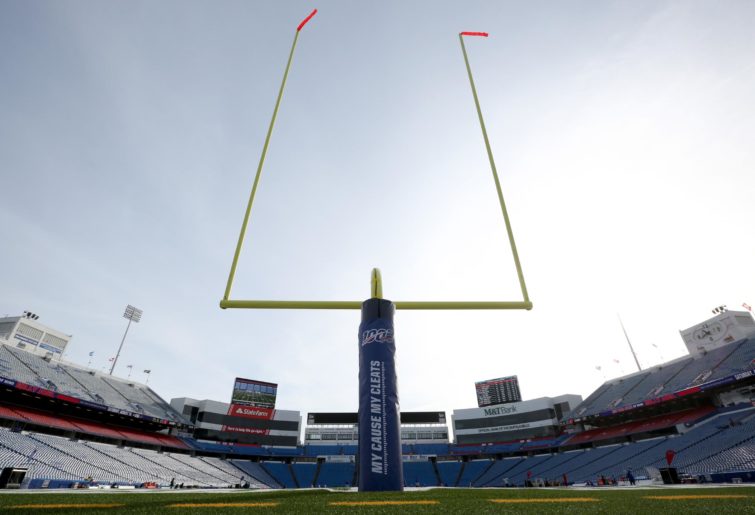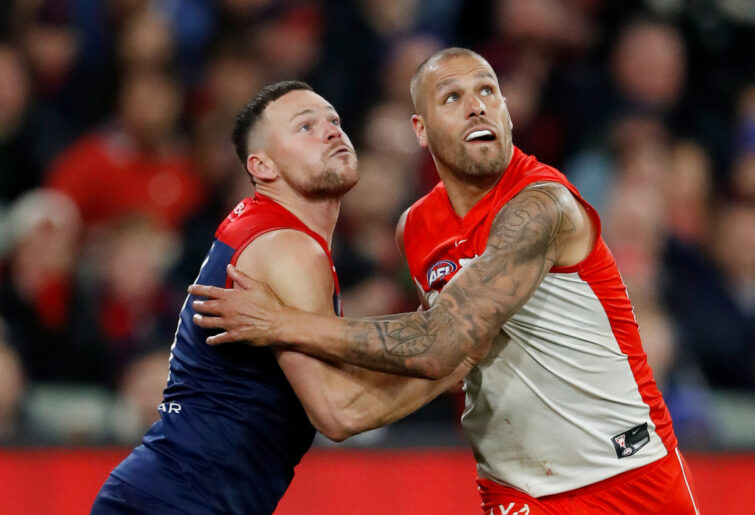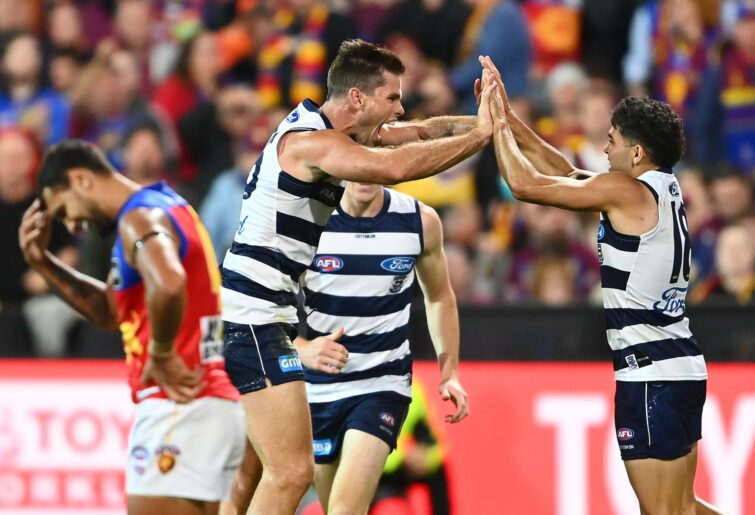The AFL has taken a lot from the NFL – music in down times, twilight finals, and abdicating responsibility for brain injuries acquired by players during their careers to name but a few.
One thing that they have taken that is truly good for the product, however, is an obsession with equalisation. Both sports have a number of mechanisms designed to ensure that there is year to year parity across the competition.
The first and most obvious mechanism is through the draft whereby ostensibly the worst team gets the best pick, subject to a team being exceptionally bad and getting some extra compensation. In addition to that, both leagues have salary caps, so wealthier clubs cannot just outspend the poorer clubs on the playing list.
The AFL even goes further than the NFL in trying to promote an equal competition. Namely, they also cap the spending on the coaching and football department staff. This does not happen in the NFL and it’s how a team with a particularly tight owner like the Bengals with Paul Brown employ a total of six scouts, while the Cowboys have in excess of 15 scouts and a separate analytics department.
Another key mechanism is free agency. There are, of course some differences in the free agency process, but the compensatory pick formula that the AFL implements is also ripped almost directly from the NFL in substance if not in form.

(Bryan M. Bennett/Getty Images)
The sports do this because they want everyone to get a bite at the cherry and a chance to taste the ultimate glory, and after a club has been at or near the top for a while, it’s time for them to fall down the ladder usually to fall into a crisis that was papered over by all of the winning (Hawthorn).
Two clubs, though, have thumbed their nose at this. They have said that equalisation is just for stupid teams who don’t understand that succession is amazing. Those two clubs happen to be playing off in a grand final for the first time in history – uncommon for two foundation VFL clubs (of course counting Sydney’s beginnings as South Melbourne).
The two clubs have similar success profiles. Since 2005, Sydney have won two premierships and finished outside the top eight just three times in the 17 years. In that same time period, Geelong have won three premierships and finished outside the top eight just twice.
Geelong, incredibly, in the last 17 years have finished in the top two after the home-and-away season 10 times. In an equalised competition, this is meant to be impossible.
These two sides have pulled off the most delicate high-wire act imaginable in the league, regenerating while also contending. Richmond is trying to do exactly that now, but even the Tigers have already missed finals twice in a row.
So, how do they do it?
For the purposes of this exercise, we will ignore the Cost Of Living Allowance debacle, though I will note that the scheme was dispensed with after the 2017 season following the Swans’ operating within AFL rules to acquire Lance Franklin and Kurt Tippett, much to the AFL’s chagrin.
I will also try to avoid the various platitudes that are usually used when explaining success in football like “a good, strong board” or “good culture”. These usually mean nothing and are just a convenient way of explaining success.
Melbourne had a “good culture” according to footy media until their best defender got punched in the face by their best boxer outside a French restaurant. Hawthorn had one and then their president forced out one of the greatest coaches in league history because he was infatuated with a young, short blonde.
The key factor, as far as I can tell, that is common to both clubs is the lifestyle factor. Both Sydney and Geelong provide something different to their players, but equally desirable to players today.
Sydney provides an escape from an oftentimes suffocating Melbourne fishbowl. By all accounts this was a key factor in their eventual signing of Lance Franklin, in addition to Sydney also being a beautiful and warmer than Melbourne coastal city that suits wealthy people extremely well.

Steven May of the Demons and Lance Franklin of the Swans compete for the ball. (Photo by Dylan Burns/AFL Photos via Getty Images)
Geelong provides something similar, offering players the chance to live near to the beach while still being ostensibly a Melbourne club. For AFL footballers who have significant recovery needs, who often like surfing, and who have six-packs so hate the restrictiveness of a T-shirt, living near the beach is a big plus.
These lifestyle factors mean players are more willing, it appears, to take less money, or at least massage when their most lucrative years come, Geelong particularly have been successful at this. While Joel Selwood and Patrick Dangerfield were at or near $1 million one or two years of their career depending on who you believe, nobody else except Jeremy Cameron has ever attained that magic AFL number.
Over this period the Cats, as detailed, have been unusually dominant and replete with stars. Usually, the highest-paid Geelong Cats sit around $800,000 per year. Even this year it was reported that Tom Hawkins, All Australian captain who has kicked 64 goals to date this season, was playing on the league minimum.
A second key factor that should be considered is, obviously, talent development. Neither team has been picking high in drafts recently, except for Sydney’s two years at or near the bottom of the ladder. What these teams have done, however, is identify and harness talent within their systems even if the players don’t have exceptional pedigree.
Sydney especially has gobbled up late-round studs like they’re Nancy Reagan in the MGM car park. Consider that Chad Warner was pick 39 in 2019, Errol Gulden was pick 32 in 2020, James Rowbottom pick 25 in 2018 or Justin McInerney taken with pick 44 in 2018. Each of these players are guns around whom the team is now built, alongside the ageing but established stars like Franklin and Parker.

(Photo by Bradley Kanaris/Getty Images)
Indeed Logan McDonald, who was taken with pick 4 in 2020, has yet to show anywhere near as much as any of the aforementioned quintet. Yes, Sydney has access to basically all of northern NSW through their academy, but their track record is not to be trifled with. They have shown an extraordinary ability to nurture talent within their confines.
Geelong have done it similarly, albeit they are more reliant on the older stars like Dangerfield, Hawkins, Cameron, Guthrie, Selwood and Duncan. What Geelong have done effectively is supplement the list to complement these players and this year, have brought in players who are extremely effective in their own right and can bend games to their will in a way that the talent on the fringes hasn’t been able to do previously.
Players like Max Holmes, Sam De Koning and Tom Atkins have been revelatory this year, with Atkins being the highest player taken at pick 11.
The other thing that Geelong have been able to do this year because their trust in their ability to continue to contend is to bring in talented but wayward players. If it works, the team is in the grand final, if it doesn’t, at worst the team is probably in another prelim.
I am, of course, talking here about Tyson Stengle. A wayward but talented young man was brought into Geelong and was this year an All Australian, providing an alternative avenue to goal instead of an over-reliance on Hawkins and Cameron.

(Photo by Quinn Rooney/Getty Images)
Paddy McCartin would be Sydney’s version of this, albeit his issues were of an entirely different nature to Stengle’s.
Finally, both clubs have been incredibly stable and have empowered their coaches to run the show. Both Longmire and Scott took over from icons after periods of sustained success but have not been second-guessed by the club at every turn. We call that the anti-Essendon in these parts.
Because of this the coaches have been able to put their imprint on the place and they have been able to withstand relatively down periods. I sometimes wonder if it is less about having some Xs and Os savant and it’s more about having a consistent, dominant voice that is able to move with the times and not get tuned out.
Of course the coach has to be talented, but it simply must go beyond just the on-field.
It’s two sides of the same coin playing off on Sunday. Two sides impressively defying equalisation at every turn using a mix of systemic and club-based factors to tell AFL house to shove it.
CLICK HERE for a seven-day free trial to watch the AFL on KAYO
































































































